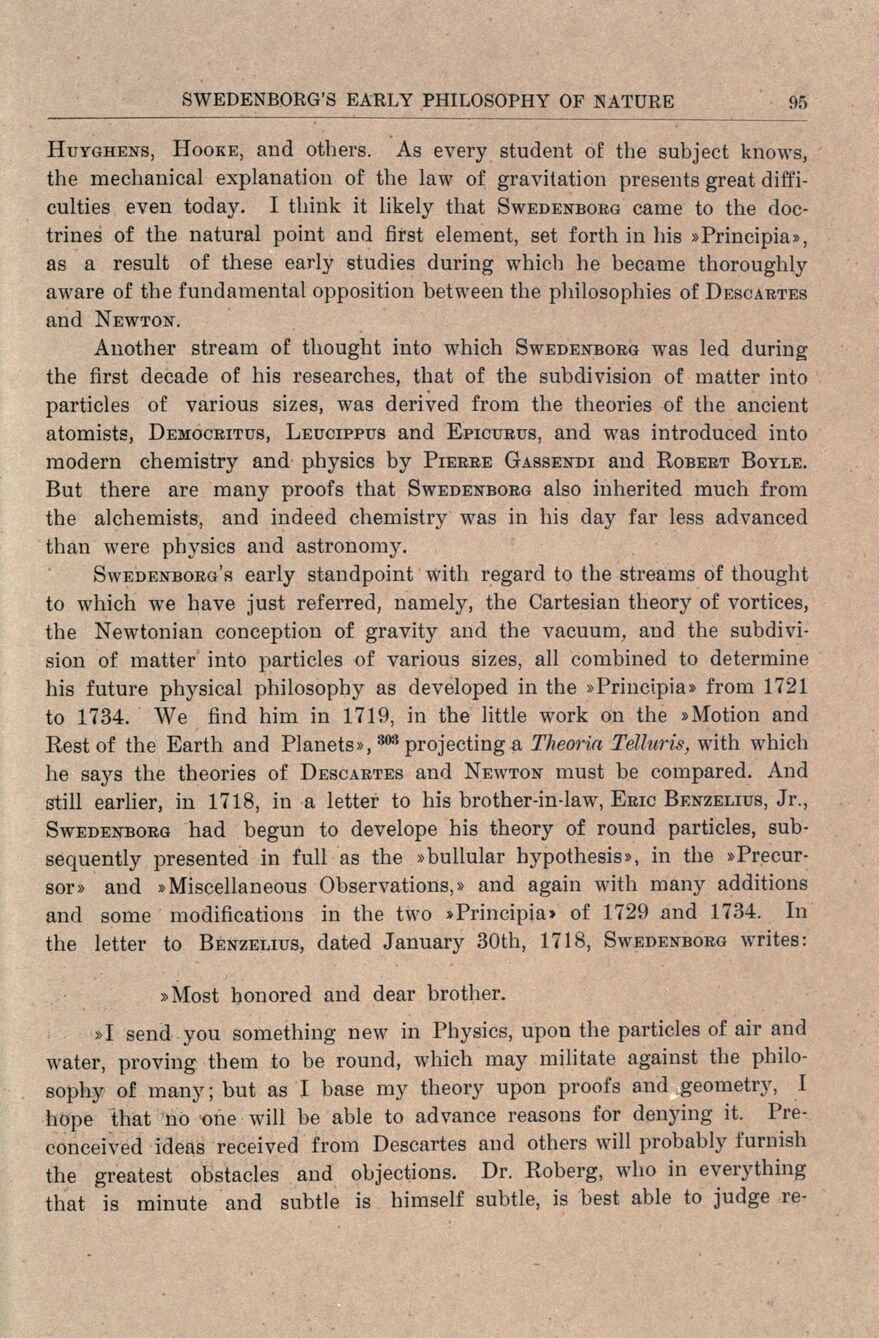
Full resolution (JPEG) - On this page / på denna sida - Sidor ...

<< prev. page << föreg. sida << >> nästa sida >> next page >>
Below is the raw OCR text
from the above scanned image.
Do you see an error? Proofread the page now!
Här nedan syns maskintolkade texten från faksimilbilden ovan.
Ser du något fel? Korrekturläs sidan nu!
This page has never been proofread. / Denna sida har aldrig korrekturlästs.
Huyghens, Hooke, and others. As every student of the subject knows,
the meclianical explanation of the law of gravitation presents great
diffi-culties even today. I tliink it likely that Swedenborg came to the
doc-trines of the natural point and first element, set forth in his »Principia»,
as a result of these early studies during which he hecame thoroughly
aware of the fundamental opposition between the philosophies of Descartes
and Newton.
Another stream of thought into which Swedenborg was led during
the first decade of his researches, that of the subdivision of matter into
particles of various sizes, was derived from the theories of the ancient
atomists, Democritus, Leucippus and Epicurus, and was introduced into
modern chemistry and physics by Pierre Gassendi and Robert Boyle.
But there are many proofs that Swedenborg also inherited much from
the alchemists, and indeed chemistry was in his day far less advanced
than were physics and astronomy.
Swedenborg’s early standpoint witli regard to the streams of thought
to which we have just referred, namely, the Cartesian theory of vortices,
the Newtonian conception of gravity and the vacuum, and the
subdivision of matter into particles of various sizes, all combined to determine
his future physical philosophy as developed in the »Principia» from 1721
to 1734. We find him in 1719, in the little work on the »Motion and
Rest of the Earth and Planets»,:$0:! projectiug a Theorin Telluris, with which
he says the theories of Descartes and Newton must be compared. And
still earlier, in 1718, in a letter to his brother-in-law, Eric Benzelius, Jr.,
Swedenborg had begun to develope his theory of round particles,
sub-sequently presented in full as the »bullular hypothesis», in the
»Precur-sor» and »Miscellaneous Observations,» and again with many additions
and some modifications in the two »Principia» of 1729 and 1734. In
the letter to Benzelius, dated January 30th, 1718, Swedenborg writes:
»Most honored and dear brother.
»I send you something new in Physics, upon the particles of air and
water, proving them to be round, which may militate against the
philosophy of many; but as I base my theory upon proofs and geometry, I
hope that no one will be able to advance reasons for denying it.
Pre-conceived ideas received from Descartes and others will probably furnish
the greatest obstacles and objections. Dr. Roberg, who in everything
that is minute and subtle is himself subtle, is best able to judge re-
<< prev. page << föreg. sida << >> nästa sida >> next page >>